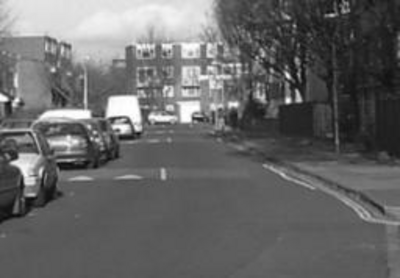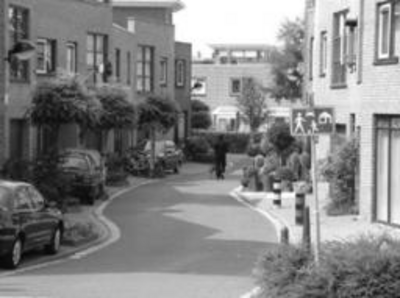Traffic calming without the hump

Julia Samson examines alternatives to the speed hump
It is generally agreed amongst transport and road safety campaigners that there should be blanket 20mph speed limits on residential roads and around schools, preferably as a default limit in all urban areas. But the big question is how do we ensure that people do actually drive at 20mph or less?
Speed humps are the traditional and probably the most widespread form of speed control in residential areas and have proved effective in saving lives and injuries. A Department for Transport survey found that 80 per cent of people support the idea of 20 mph speed limits in residential roads and that 60 per cent welcomed speed humps to achieve this.
But speed humps have been criticised in some quarters because of noise, potential damage to vehicles, and increased pollution due to the tendency for drivers to speed up between the humps. So are speed humps the only option?
Speed cameras can be used in residential areas and could be used far more often. Cameras keep speeds low through enforcement, rather than through engineering. They do not involve a lot of street clutter and are cost-effective.
In-vehicle speed limiters are also a realistic possibility and trials are being conducted in Leeds. Ultimately, a sophisticated system of ISA would mean that speed limit enforcement would no longer need to happen as cars would physically be incapable of driving above the programmed limit, whatever the intention of the driver.
However, in the run up to an intelligent speed-restrained future, speed control in residential roads will lie in a mixture of measures, including speed humps.

But maybe we should learn more from how other countries such as the Netherlands are looking at these issues. They have started to alter the way that residential roads are designed and engineered.
At the moment, residential roads are often straight and wide and simply encourage high speed driving. They have clear segregation between the pavement and the road, which gives the driver confidence to drive fast presuming that the pedestrians will stay in 'their' space.
Drivers 'read' the road and from that decide what speed is appropriate. If the road 'reads' 30mph then people will drive at 30mph, with little attention paid to the actual limit, which might be lower.
Most residential roads have not been designed to inform drivers that they are residential. Thus when residents on these road demand lower speeds, it is not enough to just reduce the limit on the signpost, because the message to the driver from the road design itself is still that you can drive at 30mph.
We need to challenge the assumption that residential roads should prioritise the needs of motorists above everything else and maybe we can do this through new design techniques.
The design principles used in the Netherlands include:
- Reduced sight lines and more bends in the road to stop motorists being able to get up speed
- Narrow carriageway width to discourage high speed driving
- Shared surfaces, often with brickwork rather than tarmac, which do not make clear where the road space and pedestrian space stop and start. All road users are thus forced to be more aware of each other and priority is agreed between users by hand signals and gestures etc;
- No bollards or railings, but useful street furniture such as litter bins and street trees used to demarcate parking bays instead;
- Improved public space with seating and street art to encourage people to stop and look or sit and talk to neighbours;
- Soft landscaping, street trees and planters to take the hard edge of all that tarmac and make it feel more like a place for people.
These techniques give us an alternative vision to the speed humps and bumps; one in which people are trusted to behave appropriately in the surroundings they find themselves in. The question remains: would it work in Britain?
- Julia Samson is Streets for People Coordinator for Transport 2000. Streets for People is a network that supports communities with traffic problems by providing advice, information and support.
